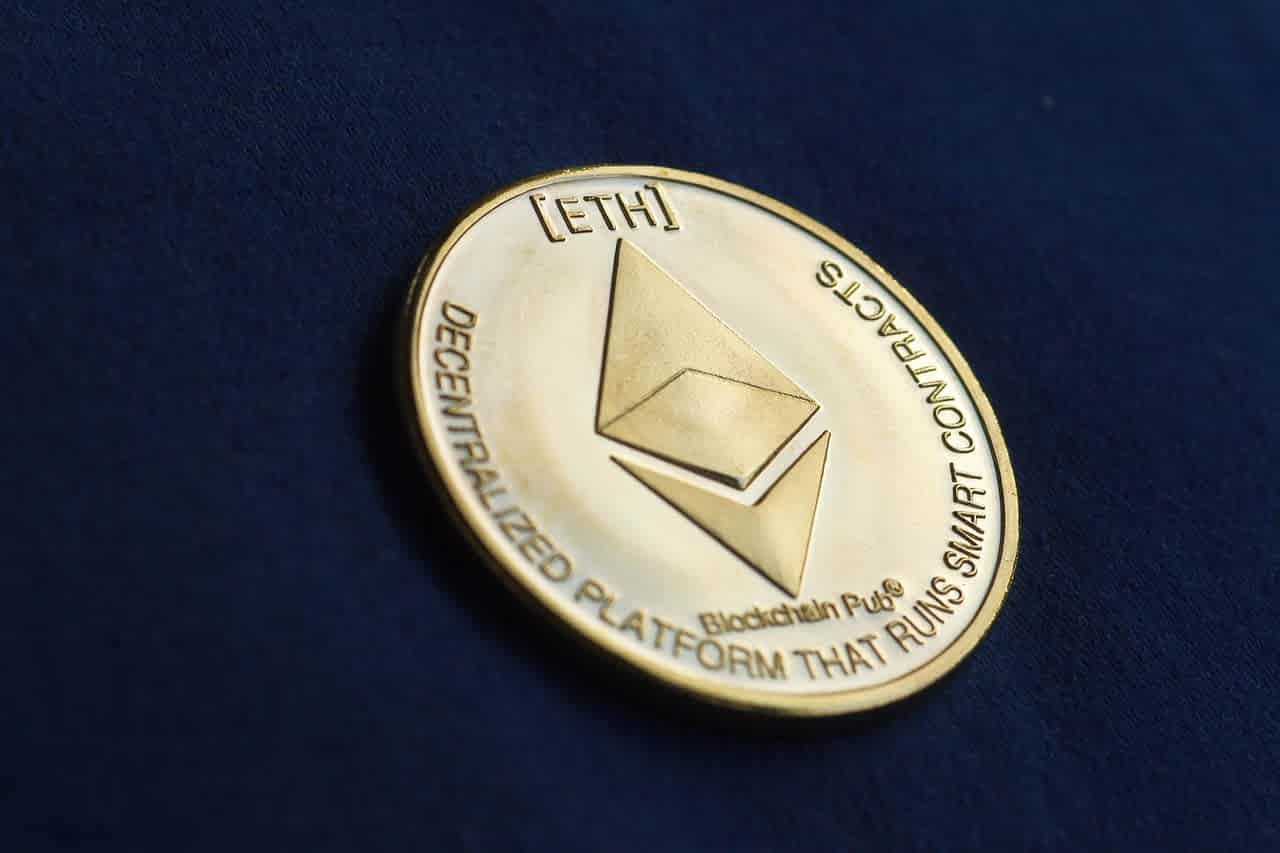
Understanding Ethereum
Code, community, and capital — why Ethereum is reshaping the architecture of trust in a decentralized financial future
Ethereum is not just another cryptocurrency. It is the infrastructure layer for a new financial and digital ecosystem — one where contracts enforce themselves, ownership is programmable, and innovation occurs without central permission. Unlike Bitcoin, which is primarily a digital store of value, Ethereum serves as the backbone for decentralized applications and smart contracts that can automate complex financial and non-financial interactions. In this way, Ethereum is not merely a speculative asset but a transformative platform, bridging the worlds of finance, technology, and governance.
For investors, developers, and visionaries, Ethereum represents both an opportunity and a challenge. It demands technical understanding, strategic foresight, and a tolerance for volatility. But for those who grasp its potential, Ethereum offers a glimpse into what the future of digital finance might look like: borderless, trustless, and algorithmically precise. This is not just a shift in software. It is a shift in how society defines value, authority, and collaboration.
In the constellation of digital assets and blockchain platforms, Ethereum shines not just for its market capitalization, but for its utility and vision. Conceived in 2013 by Vitalik Buterin and launched in 2015, Ethereum was designed to go beyond the original purpose of blockchain — not merely as a decentralized ledger for transactions, but as a global computer for running decentralized applications (dApps). Its core innovation is the smart contract: a self-executing code that runs exactly as programmed, without downtime, fraud, or third-party interference.
Ethereum’s appeal lies in its versatility. Developers use it to build decentralized exchanges, lending protocols, NFT marketplaces, digital identity systems, and even decentralized autonomous organizations (DAOs). Investors view Ether (ETH), Ethereum’s native token, as both a utility asset and an emerging digital commodity. Institutions observe Ethereum not just for its financial implications, but for its potential to rewire how contracts, governance, and asset ownership are managed in a digital age.
The platform’s evolution — from its proof-of-work origins to the recent transition to proof-of-stake through the Ethereum 2.0 upgrade — reflects a commitment to scalability, energy efficiency, and long-term vision. Yet Ethereum remains a work in progress, shaped as much by its community as by its code. Understanding Ethereum requires more than a primer on blockchain. It requires an appreciation of economics, software development, game theory, and social coordination.
For wealth managers and investors, Ethereum’s role is complex. It is not a traditional equity, bond, or commodity. It doesn’t offer cash flows in the conventional sense. But it can generate yield through staking, support programmable financial contracts, and provide exposure to the fastest-growing segment of the digital economy. As part of a diversified portfolio, Ethereum is not just a bet on a technology — it is a participation in a movement.
Ethereum as a Platform: Infrastructure, Not Just Investment
To view Ethereum solely as a cryptocurrency is to miss its true significance. Ethereum is a decentralized network of computers that validate and store data while executing smart contracts. In essence, it is an operating system for decentralized applications — a neutral, open-access layer upon which anyone can build.
This architecture gives Ethereum an “infrastructure” quality that sets it apart from purely transactional blockchains. It is comparable not to a currency, but to the internet itself — a base layer upon which other services, platforms, and economies can be constructed.
Smart contracts are the heart of Ethereum. These are immutable, transparent pieces of code that execute specific conditions automatically. For example, a lending protocol might allow users to deposit assets and borrow others based on algorithmic rules — all without banks or intermediaries. A supply chain application might track the provenance of goods from production to delivery, verified cryptographically at each stage.
This programmability allows Ethereum to support entire financial systems — known as decentralized finance, or DeFi — where traditional services like lending, trading, and insurance are rebuilt without intermediaries. It also supports NFTs, enabling digital art, collectibles, and real estate to be uniquely tokenized and exchanged.
For investors, this means Ethereum is not just a speculative asset; it is a bet on the foundational infrastructure of Web3. Its value is tied not just to ETH’s price, but to the utility and adoption of applications built on top of it. The more the ecosystem grows, the more demand there is for ETH, since gas fees (the cost of interacting with Ethereum) are paid in the native token.
Ether (ETH): Currency, Commodity, or Utility?
ETH, the native token of the Ethereum network, occupies a curious place in the financial taxonomy. It is part currency, used to pay fees and incentivize validators. It is part commodity, scarce and mined — or now staked — in exchange for securing the network. And it is part utility, necessary to interact with smart contracts and applications built on the Ethereum platform.
This multifaceted identity complicates valuation but enhances relevance. As a medium of exchange within a closed system, ETH has clear intrinsic demand. As a scarce asset with a fixed issuance schedule (now deflationary under Ethereum Improvement Proposal 1559), it has store-of-value potential. As a staking asset in Ethereum 2.0, it also generates yield.
ETH’s role has expanded as Ethereum transitions to proof-of-stake. Under this model, validators secure the network by staking ETH instead of mining it with energy-intensive computing power. In return, they earn rewards, effectively transforming ETH into a yield-bearing asset — comparable, in some respects, to a digital bond.
Yet ETH is volatile. Unlike traditional currencies, it is not backed by a central bank. Unlike equities, it does not represent ownership in a company. Unlike bonds, it does not guarantee income. For these reasons, ETH may not suit all investors. But for those with a long-term horizon and a belief in the rise of decentralized applications, it can serve as a strategic allocation to digital infrastructure.
Decentralized Finance (DeFi): Ethereum’s Killer Application
Perhaps the most compelling use case for Ethereum is in DeFi — a fast-growing sector that reimagines financial services without intermediaries. Built entirely on smart contracts, DeFi applications let users lend, borrow, trade, and insure assets directly from their crypto wallets.
In DeFi, collateralization is algorithmic, not institutional. Interest rates are dynamic, not pre-negotiated. Transactions are transparent, auditable, and settled in minutes, not days. Liquidity is provided by users, not banks, and rewards are distributed according to clear rules encoded in smart contracts.
Examples include lending platforms, decentralized exchanges, and synthetic asset issuers. Each operates without a central authority. Each depends on Ethereum to function. And each contributes to the growing financialization of the Ethereum ecosystem.
For investors, this opens new frontiers — not just in terms of asset access, but in strategy. One can stake ETH for yield, provide liquidity to earn trading fees, or participate in governance tokens that shape protocol evolution. However, DeFi also carries risks: smart contract vulnerabilities, governance manipulation, and regulatory uncertainty.
Yet DeFi’s appeal remains strong. In a world of declining trust in centralized institutions, the promise of self-custody, transparency, and interoperability resonates. Ethereum is the backbone of this movement — not just as a platform, but as a philosophy.
NFTs and Digital Ownership: Ethereum’s Cultural Impact
While DeFi changed how we interact with money, NFTs changed how we think about ownership. Ethereum made both possible.
NFTs — non-fungible tokens — are unique digital assets representing art, collectibles, media, or virtual real estate. Unlike fungible tokens (like ETH or BTC), each NFT is distinct and cannot be interchanged one-to-one. The value is in the identity and provenance — verified by Ethereum’s blockchain.
NFTs have captured the public imagination. From high-profile art sales to in-game assets, they have created new economies around creativity. They enable artists to monetize their work directly, bypassing galleries or labels. They let users own parts of virtual worlds. They even allow for fractional ownership of real-world assets.
Ethereum’s role is central. Most major NFT platforms are built on Ethereum. Smart contracts handle royalties, transfers, and authenticity. Wallets provide access. The infrastructure enables a seamless, permissionless global market for culture.
For investors, NFTs present a high-risk, high-reward opportunity. Valuation is subjective. Liquidity is variable. Hype cycles are intense. But for those willing to learn, NFTs represent a new asset class — blending scarcity, creativity, and community in ways traditional finance never imagined.
Ethereum 2.0 and the Road to Scalability
One of Ethereum’s biggest challenges has been scalability. As usage increased, so did congestion — and with it, transaction fees. This limited adoption and raised questions about long-term viability.
Ethereum 2.0 — now branded simply as “The Merge” and subsequent roadmap stages — is the network’s ambitious attempt to overcome these limits. The transition from proof-of-work to proof-of-stake drastically reduces energy consumption. Upcoming features like sharding aim to increase transaction throughput by orders of magnitude.
Layer 2 solutions also help by processing transactions off-chain and settling on Ethereum later. These “rollups” maintain security while improving speed and cost-efficiency.
For investors and developers alike, scalability is not just a technical fix — it’s a business imperative. If Ethereum is to remain the default platform for DeFi, NFTs, and decentralized identity, it must be fast, affordable, and reliable. Ethereum 2.0 represents not just an upgrade, but a reinvention — and it is one of the most closely watched developments in the blockchain space.
Regulatory and Institutional Perspectives
As Ethereum grows in scope and value, it increasingly draws attention from regulators and institutions. Questions around its classification — as a commodity, security, or something new entirely — shape how it is taxed, traded, and integrated into traditional financial systems.
Institutions have begun to embrace Ethereum. Investment funds, banks, and tech companies are exploring Ethereum-based products. Enterprise Ethereum Alliance promotes adoption in business settings. Even central banks are experimenting with Ethereum testnets for digital currencies.
At the same time, governments worry about DeFi’s lack of oversight, NFTs’ speculative bubbles, and the energy use of blockchain platforms. The regulatory framework remains fluid, and investors must navigate evolving compliance, tax, and disclosure requirements.
Yet these uncertainties reflect Ethereum’s importance. No longer a fringe technology, Ethereum is becoming part of the mainstream financial conversation — a tool, a challenge, and a mirror for broader digital transformation.
Partnering with Experts: Understanding Ethereum in Context
At LUXIM, we believe that digital assets like Ethereum are more than technological trends — they are part of a larger evolution in how society thinks about trust, value, and ownership. For our clients, Ethereum represents both opportunity and complexity. It offers access to the future of finance — but only with the right understanding, strategy, and safeguards.
We help clients evaluate Ethereum not just as an asset, but as a system. We assess how it fits into your broader investment objectives, how it interacts with risk tolerance, and how it can be used — or avoided — in the context of tax, estate, and succession planning. From staking strategies to custody solutions, from diversification to due diligence, we help you explore Ethereum with clarity.
Our approach combines technical insight with strategic judgment. We stay abreast of regulatory developments, network upgrades, and market trends. We don’t chase hype — we identify value. And we recognize that Ethereum, like any financial innovation, must be understood before it is embraced.
Whether you are curious about allocating capital to digital assets, exploring NFT ownership, or simply seeking to future-proof your portfolio, we are here to guide you.
Book an appointment or get in touch with us today to learn how LUXIM can help you navigate Ethereum and the broader digital asset landscape — with intelligence, prudence, and purpose.
Related Posts

Understanding Smart Contracts
Code, clarity, and control — why smart contracts are redefining the future of finance, legal agreements, and investment structures

Understanding Blockchain
Transparency, immutability, and decentralization — how blockchain is redefining the financial architecture for institutions, investors, and global markets alike

Understanding Crypto Wallets
Access, security, and ownership — why understanding crypto wallets is essential to navigating the digital finance frontier with confidence and control

Understanding Smart Contracts
Code, clarity, and control — why smart contracts are redefining the future of finance, legal agreements, and investment structures

Understanding Blockchain
Transparency, immutability, and decentralization — how blockchain is redefining the financial architecture for institutions, investors, and global markets alike

Understanding Crypto Wallets
Access, security, and ownership — why understanding crypto wallets is essential to navigating the digital finance frontier with confidence and control
Disclaimer
The content published on this blog, including articles contributed by LUXIM, is for informational purposes only and should not be considered financial, investment, tax, or legal advice. While we strive to provide accurate and up-to-date information, LUXIM and other contributors do not guarantee the completeness, reliability, or accuracy of the content.
Real estate and wealth management involve risks, including potential financial loss. Past performance is not indicative of future results. Any decisions regarding investments, property purchases, or financial planning should be made based on independent research and consultation with qualified professionals, such as financial advisors, legal experts, or real estate specialists.
Neither LUXIM nor the blog's administrators are responsible for any financial or legal consequences resulting from actions taken based on the content of this blog. Readers should use their own judgment and seek expert guidance tailored to their specific circumstances.